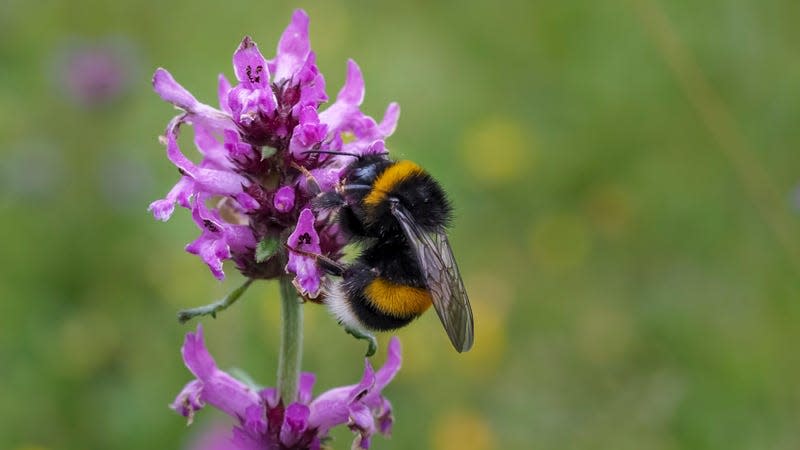Europe's Bumblebees Are in Big Trouble

A large garden bumblebee or ruderal bumblebee (Bombus ruderatus), one of many species commonly found in Europe.
The bumblebee’s days in Europe might be numbered. In new research out this week, scientists predict that as many as three-quarters of bumblebee species in the region will experience substantial population decline and territory loss over the next several decades due to manmade problems like climate change. While there is hope that these vital pollinators can still find refuge in certain areas, even that isn’t certain, the authors say.
Bumblebees are insects belonging to the genus Bombus, and there are over 250 known species of them worldwide. Like other bees, they play an important role in pollinating wild plants and agricultural crops, especially in the Northern Hemisphere where they’re most abundant. But bumblebees as a whole have been facing a population crunch in Europe, North America, and Asia for decades. There are several reasons for this decline, but they include habitat loss, climate change, and the spread of dangerous diseases.
Read more
Final Fantasy VII Rebirth Won’t Let Players Import Saves From The Last Game
United Airlines Flight Depressurizes And Drops 28,000 Feet In Ten Minutes
Sopranos star Drea de Matteo says ended up on OnlyFans because she wouldn't get vaxxed
LeBron James, wife and 2 associates named in federal PED investigation
Hasan Minhaj admits to fabricating alarming details in his stand-up specials
More research is needed to better understand the specific ways that climate change and habitat loss will affect bumblebee populations, but the overall takeaway is clear, the authors say: The fate of the world’s bumblebees is quite literally in our hands.
“Our results underline the critical role of global change mitigation policies as effective levers to protect bumblebees from manmade transformation of the biosphere,” they wrote.
More from Gizmodo
Nexus Mods Fine With Bigots Leaving Over Removed Starfield ‘Pronoun’ Mod
Lauren Boebert Caught on Video Vaping at ‘Beetlejuice’ After Staunch Denials
Kentucky GOP Candidate Signed Pledge Saying the Birth Control Pill Causes Abortions
Sign up for Gizmodo's Newsletter. For the latest news, Facebook, Twitter and Instagram.

